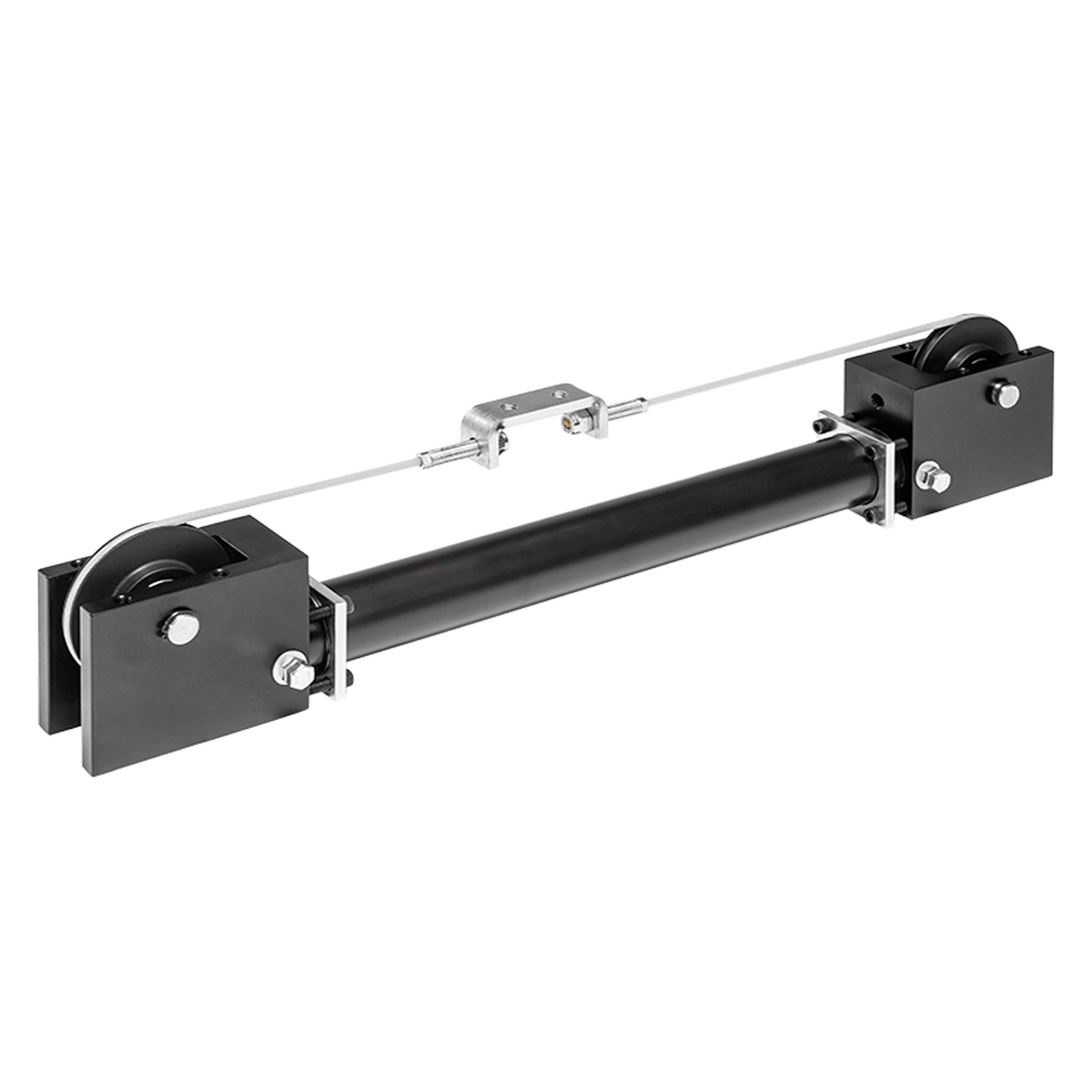
Movement is the fundamental purpose of industrial and manufacturing equipment, regardless of the specific application. Components or loads need to move forward, backward, up, or down, and actuators often have to control the speed or abruptly stop movement. Sometimes loads are heavy and distances are long. It is essential to choose the right actuators. Cable cylinders ave been an economical solution used in many industries for decades.
This information will help you decide if this style of cylinder can do the job you need done.
Resource: Pneumatic Linear Actuators
Advantages of Cable Cylinders
Cable cylinders were the world’s first “rodless” cylinders. By design a cable cylinder moves the workload along its body length, unlike a rodded cylinder which expands and retracts a piston rod almost 2 times its body length. The main advantage here is that cable cylinders save space.
Another plus is the versatility. Cable cylinders are a useful choice for a wide variety of applications because they come in many styles and configuration options:
- Guided
- Linear tension
- Single-acting
- Double-acting
- Position holding by adding a pneumatic braking option
Cable cylinders are good for many non-standard applications. The versatility of their design permits them to operate in harsh environments by just sizing the cables longer. The cable cylinder body can be protected from the harsh environment and with only longer cables and the sheave assemblies located in harm's way. Pharmaceutical cage washers are a perfect use case.
A big selling point for cable cylinders is cost. They are relatively inexpensive compared to other types of rodless actuators. Cable is less costly than aluminum extruded tube bodies of “band-type” rodless cylinders as one example.
Straightforward maintenance. (If you’re a car buff, think fixing a carburetor as opposed to a fuel injection system.) Cable cylinders do require initial proof loading and pretensioning to set the desired tension—watch here to learn how—but once that’s done the cylinder is ready to get to work. As with any type of actuator, regular inspection and preventive maintenance is the easiest and most cost-effective way to ensure reliable performance and the longest life.
Very long stroke length. A cable cylinder can accommodate strokes of up to 30 feet or more.
Responsiveness. Cable cylinders perform the same as other types of cylinders.
Load. Cable cylinders can handle similar loads as other actuators.
Automation. Just like other types of actuators, cable cylinders can accommodate the use of sensors.
Not for Every Application
The negatives you might associate with cable cylinders are really only potential drawbacks, depending on your specific application and setting. Sometimes, it’s simply a matter of preference.
Cable cylinders (without integral guiding) must have the loads externally guided and supported. On a standard cable cylinder, guidance is necessary to maintain movement in a straight line. Load support is needed to also take advantage of sliding coefficient of frictions. Think of the cable cylinder to shuttle the load only.
Legacy technology. Because they have been around so long, circa 1960s, cable cylinders tend to be considered “old style,” so they are not used as often anymore. If you prefer a higher-tech solution, then they may not be your first choice.
Loads may need to be guided. On a standard cable cylinder, guidance is necessary to maintain movement in a straight line.
Legacy technology. Because they have been around so long, cable cylinders tend to be considered “old style,” so they are not used as often anymore. If you prefer a higher-tech solution, then cable cylinders are not your best choice.
Not a food-grade or wash down option. If you need a cylinder in a harsh or a food-friendly environment there are better Branham actuator choices.
They are not available in stainless steel, which is required for food-grade applications, medical devices, pharmaceuticals, chip manufacturing, and similar high-sanitation environments. In addition, parts could harbor germs, dirt, or other contaminants, and the cylinders are not designed to withstand repeated washdowns.
Size. Dimensionally, the envelope of cable cylinders may be larger than comparable band-type or magnetically coupled cylinders.
In the right setting, cable cylinders offer many benefits and can perform well in a wide range of functions. They’re not right for everything. Need some help making the right choice? Our Branham experts are just a phone call away.


